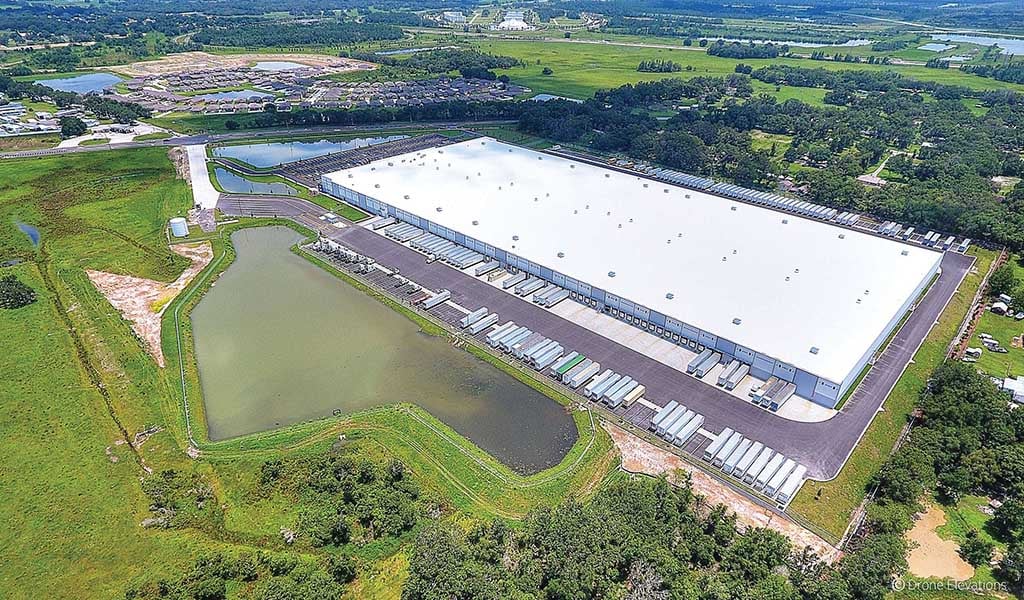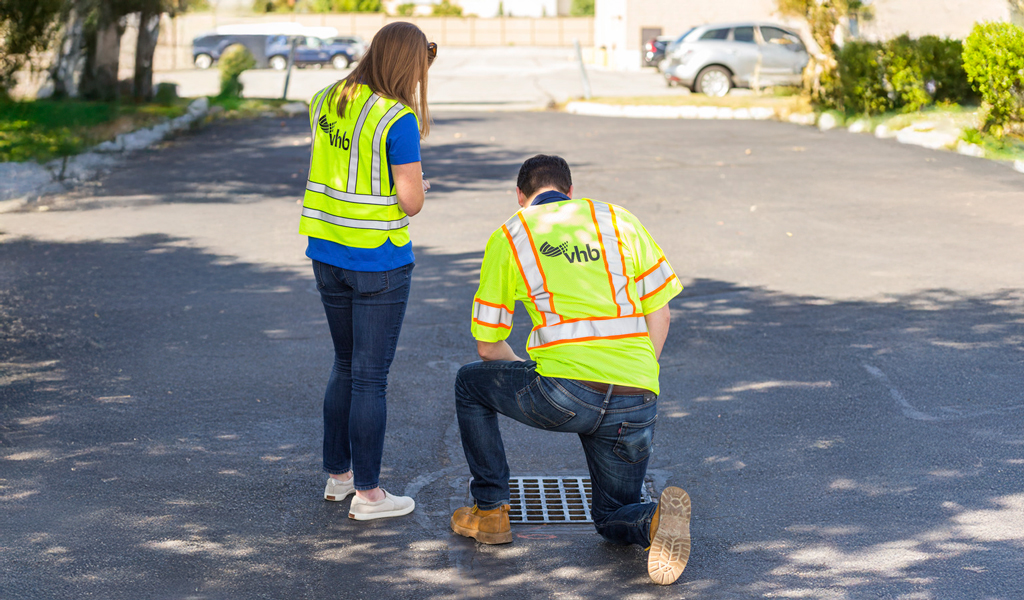
As of December 28, 2025, Florida will implement new statewide stormwater management rules (SB 7040) that will impact how public and private organizations approach land development and redevelopment projects. These changes, designed to improve water quality and reduce nutrient loading in Florida’s waterways, introduce stricter requirements for stormwater treatment systems.
Jaime Igua, Director of Healthcare/Higher Ed, and Cameron Langermann, Director of Land Development, are Florida civil engineers and project managers who have helped clients across the state with site development, stormwater management, utility design, permitting and construction oversight. From hospital campuses to multifamily developments, they’ve implemented innovative stormwater solutions that balance environmental stewardship with project feasibility.
We spoke to Jaime and Cameron about the new rules and how VHB is guiding clients through these changes with our integrated service approach.
VHB: What are the new stormwater rules adopted by the State of Florida?
Cameron: The updated rules will be adopted by Florida’s five water management districts which oversee and protect the state’s water supply, quality, flood protection and natural systems. The changes focus on improving water quality by requiring more stringent treatment of stormwater runoff before it is discharged. The biggest takeaways from the new rules are about water quality and the treatment methods for runoff. For owners and developers evaluating new or existing sites, it’s no longer as simple as just having a bigger pond to be compliant. They need creative, site-specific solutions to reduce nutrient loading effectively while protecting the site’s natural resources.
Jaime: One of the most significant changes is the redefinition of redevelopment requirements. Previously, if a site maintained or reduced impervious surfaces, additional stormwater treatment was not required. Under the new rules, any redevelopment project on a site larger than one acre must implement a stormwater treatment system, regardless of existing conditions.
This change could have substantial cost implications for projects like hospital campuses or multifamily developments. For some clients, this could mean adding a specialty stormwater system costing upwards of half a million dollars.

VHB: Why do these changes matter?
Cameron: The new rules aim to address Florida’s ongoing challenges with water quality and nutrient pollution, while enhancing sustainability. By requiring more robust stormwater system design, treatment, and maintenance, the regulations will help reduce the downstream impacts of urban development on sensitive ecosystems. However, these changes also mean that developers must carefully plan and budget for stormwater management early in the design process.
Jaime: The changes emphasize the importance of early planning for projects of all sizes. We’ve seen cases where developers underestimated the stormwater requirements, only to find out later that their project needed underground chambers or other costly solutions. That’s why we encourage clients to engage us early in the process to conduct upfront analyses and avoid surprises.

VHB: How can we help?
Jaime: Navigating these new regulations requires knowledge, creativity, and a deep understanding of site-specific conditions. In addition, there are some exceptions to the rules based on project type, characteristics, and prior approvals. At VHB, we bring together a multidisciplinary team of civil engineers, landscape architects, and environmental specialists to develop customized solutions that meet regulatory requirements and interpret complex regulations while aligning with our clients’ goals.
Cameron: Our integrated services approach allows us to evaluate all options and tailor stormwater systems to each site. This isn’t a one-size-fits-all situation. Every site is unique, and our job is to provide a menu of options that balance compliance, cost, and functionality.
For example, VHB has already been working with clients to implement treatment train models, which use a combination of swales, ponds, and other methods to treat runoff effectively. This approach not only meets the new requirements but also helps clients achieve long-term cost savings by reducing maintenance needs and improving system efficiency.

VHB: Why is early engagement so critical?
Cameron: One of the key lessons we are taking into the new year from our experience is the importance of early-stage planning. By conducting a 30 percent design analysis upfront, developers can identify potential challenges and costs before committing to full construction plans. Imagine getting to 100 percent construction drawings only to find out that your stormwater system will cost millions more than expected. That’s a project killer.
Our early engagement process helps clients avoid these pitfalls by providing a clear understanding of stormwater requirements and potential solutions from the outset. This proactive approach not only saves time and money but also confirms that projects stay on track and meet regulatory deadlines.
Jaime: We’ve been designing for impaired sites and stringent water quality standards for years. Now that these requirements are statewide, we’re already ahead of the curve. As the new stormwater rules take effect, it’s more important than ever to have an experienced partner who understands the complexities of Florida’s regulatory landscape and constraining costs.
Connect with Jaime and Cameron and learn more about Water Resources at VHB.


